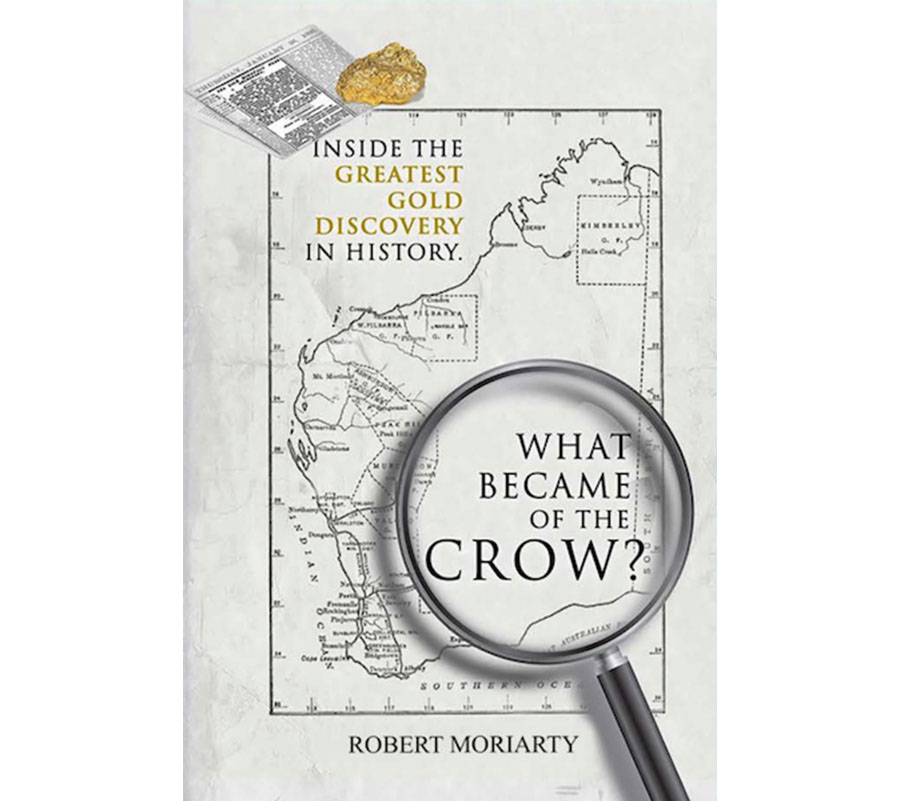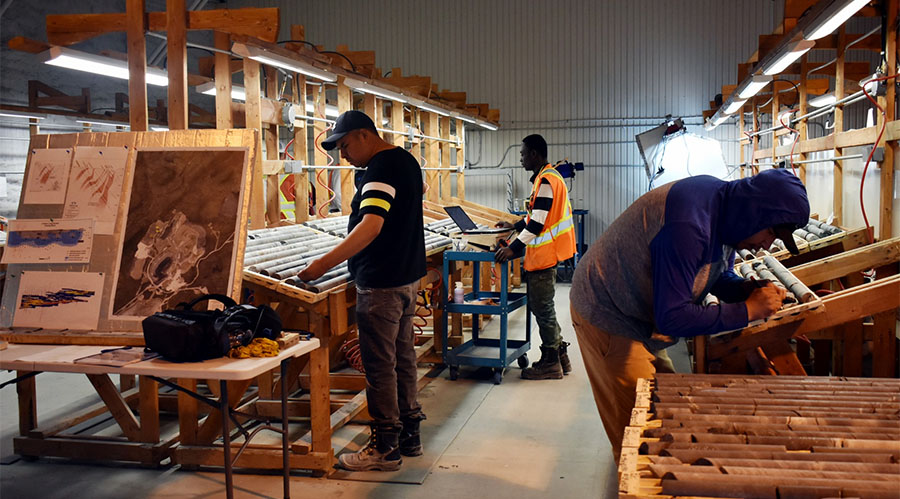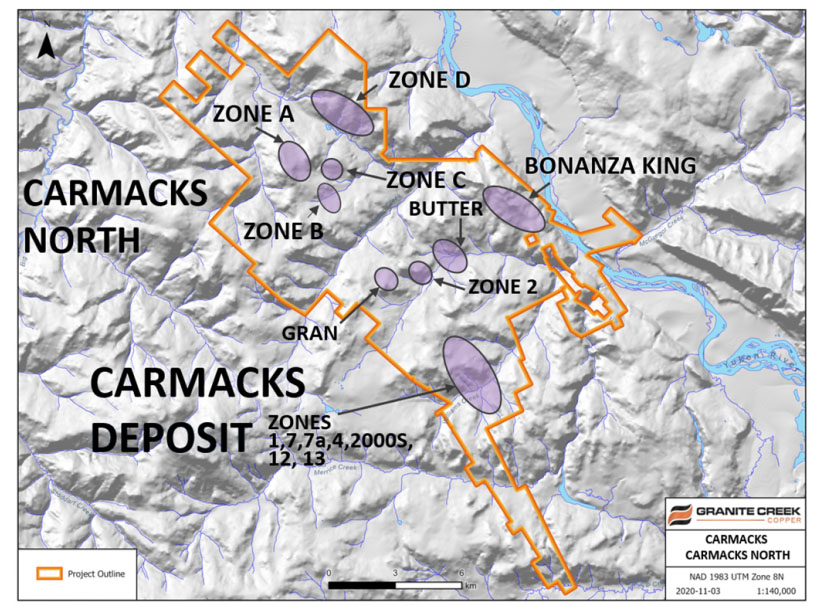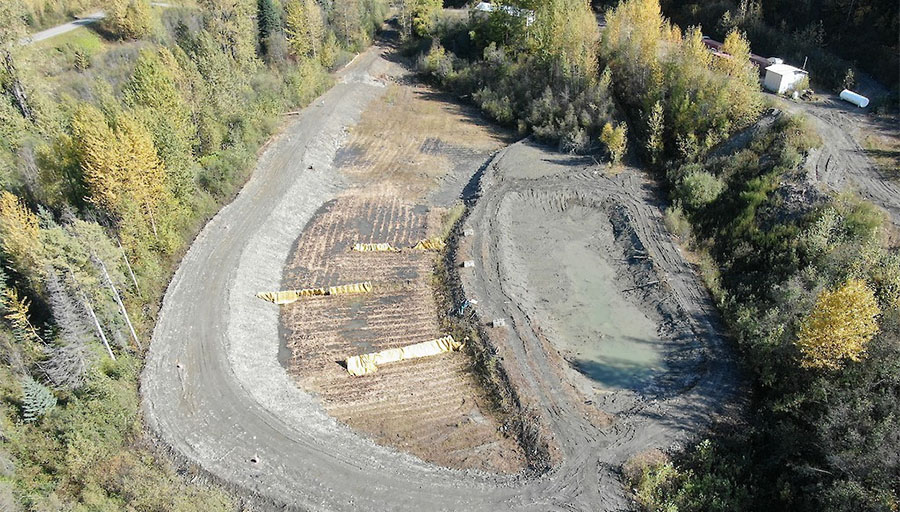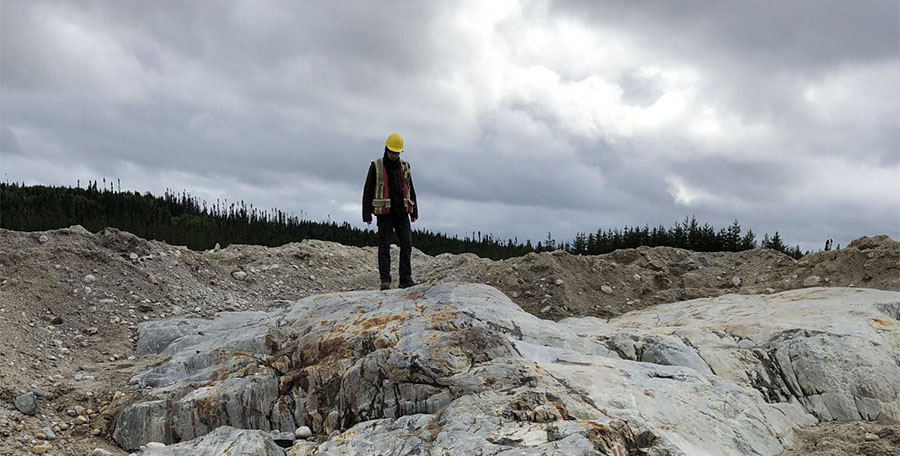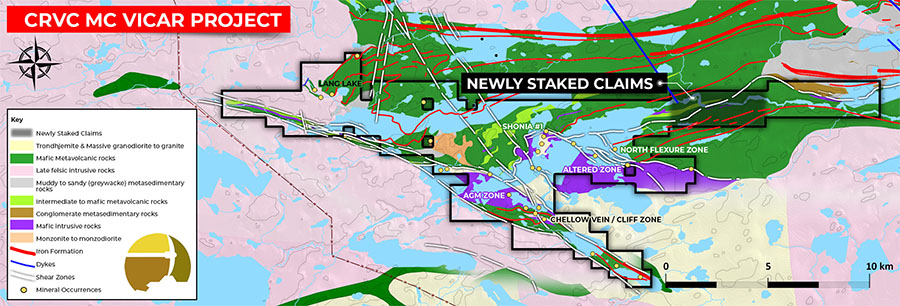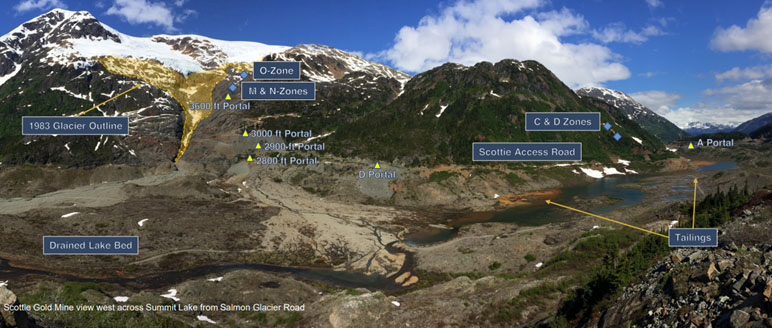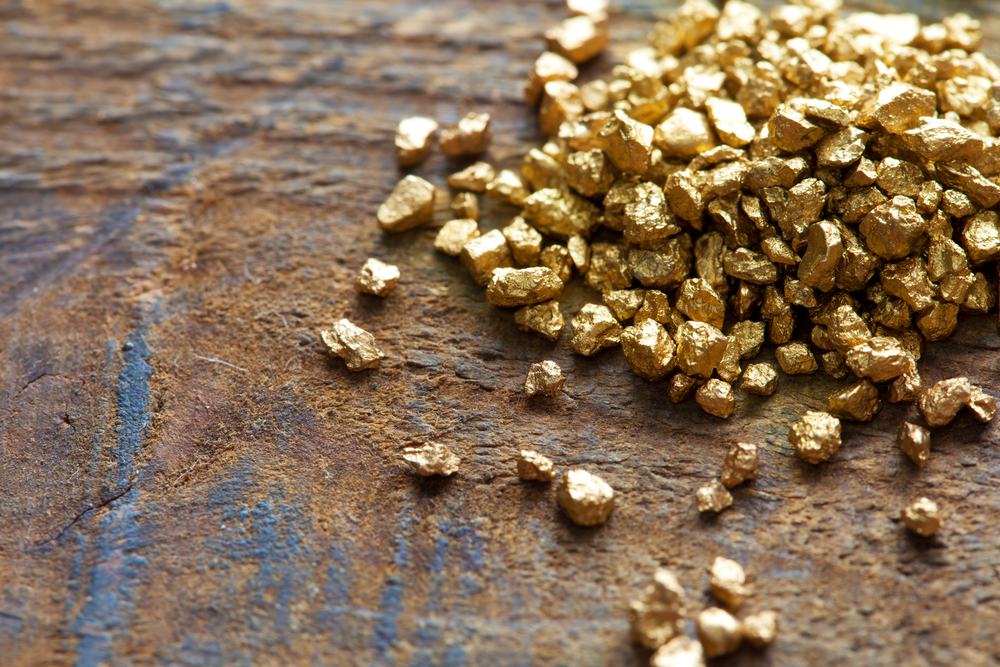Bob Moriarty's newest book, partially titled "What Became of the Crow," is likely to be his Magnum Opus—and if it isn't, it should be! Like a great symphony that starts out slow, builds up subtly but relentlessly and finally "bursts forth" with an energy that leaves the reader wondering, "My god, to think that I almost didn't get a chance to read about this!" The next thought is, OMG, it's a publicly traded company and I don't even have any shares!" Or if he/she does, "Is my position 'of size'"?
The short form on this is that Quinton Hennigh, arguably one of the most insightful geologists of the day, has put together and test-driven a theory—at first mocked by "professionals" and average folks alike—that Western Australia (WA) having in the dim past been physically connected to South Africa, and therefore having certain geologic similarities in time and formation to an area known as "the Wits"—very likely held similar kinds of gold deposits. It was no ordinary deposit either. After its discovery in 1886, Witwatersrand proceeded to give up around 40% of all the gold ever mined anywhere in recorded history! Can you spell hundreds of millions of ounces?
Gold in the Wits tends to be found in layered reefs in conglomerate deposits. In WA it's also found in loose particles, from micro-sized, invisible to the naked eye (like much of what's in Nevada, the world's fourth largest producer), to hold-in-your hand flakes and nuggets.
Not only did Quinton persevere against the beliefs of others in how that gold got there—stated oversimplified, as having been precipitated toward the surface by a geothermal process, then through the eons, precipitating out of salt water to be distributed into conglomerate reef deposits. But there's more. Some of it indeed is in hard rock, but it's also found in weathered and alluvial sections, or pretty much lying on the ground in nugget form, often coved by shallow rocky-sandy soil overburden.
Genius has been defined different ways, but this one by Yehuda Lindell, CEO of Unbound Tech, probably fits Quinton as well as any other: "Genius isn't necessarily coming up with everything from scratch, it's knowing how to take some existing ideas and use them in a radically different way to get something that's very, very new.” And a critical adjunct of "genius" is the willingness to act on that understanding. Mega-check by Quinton's name.
Bob's writes narrative-style, salty, and iconoclastic—just like the conglomerate-hosted gold nuggets in Western Australia's Pilbara where Novo Resources Corp. (NVO:TSX.V; NSRPF:OTCQX) is getting ready to go into production, perhaps bringing a new and compelling chapter to the ongoing story, proven time and time again throughout history, that "There's no rush like a gold rush"!
I've been with Bob Moriarty on a few of his many mining tour sorties, and I can tell you that whether he's speaking with management to tease the truth out of them about their "highly prospective" property (never forget the maxim that "The definition of a gold mine is a hole in the ground with a liar standing next to it.") or chipping away with his prospector's pick (ore hammer), then looking at the retrieved specimen up close and personal with a loupe (jeweler's magnifier), he quickly "becomes at one with the ore body." Heck, he's so tough that when he's crawling around on the ground in a mine shaft, or on a reef in bone-dry Western Australia, he doesn't even use knee pads! But what would you expect from a guy who once flew a single engine plane through the Eiffel Tower!
Anyway, I've just finished reading this book and by the time I got to the end of it, I was more than a bit amped up about what—and how—he's been able to bring this story to the public in a way that is at once entertaining, informative, and reality-shifting, especially for anyone willing to question what they think they know about how gold has to be deposited, where it can be found—and retrieved.
Yes, gold can be, and is commonly found in hard rock veins, plus anywhere from stony outcroppings, down through layers in the earth's crust known as epithermal and mesothermal. It can be deposited in a variety of ways—and places—during and after intrusions toward the surface in hot fluids like molten ore—or water via "smokers," hydrothermal vents that eject jets of particle-laden fluids and later form mineral-rich chimneys. It can be precipitated out of solution, ending up in various surface formations. Even today, there's gold to be found in seawater, though no one has yet figured out how to process it.
Novo's varied property holdings demand several different "approaches" in order to maximize gold retrieval, minimize environmental disruption, and successfully correlate with the needs and sensibilities of the locals. Exploratory and follow-on work done at nugget-rich Egina demonstrates all of the above. As Bob discusses:
First you strip off the thin layer of overburden. Novo intends to literally slide a steel plate under a section of overburden and move it off to the side. Then process the meter or two of gold-bearing gravel. The loose gravel is run through either a Steinert or a Tomra sorter and put right back where it just came from—minus the gold picked up by the machine, which is fed into a container of its own, never to be touched by human hands. At the end of the process, the overburden and vegetation is put back in place on top of the gravel.
Bob is an autodidact, a generalist, and a darned-good observer of both the human condition and that of how the earth's crust has formed geologically, not to mention what's actually in it, and where the good stuff (i.e., the gold) is located. He's THE man qualified to write about this story and the rogue's gallery of personalities that have walked across the stage to build it out over the last few decades. He and Dr. Keith Barron (who himself discovered one of the largest gold deposits of the last 25 years in Ecuador), elevated in no small way the back and forth discussion, on-site research and planning that helped build a world view which fit what was actually going on in The Pilbara. For well over a century, until now, everyone else has missed its true significance. Not to mention the legions of prospectors, business men, iron ore producers, criminals and other assorted social flotsam that always washes up on the beach in these narratives, none of whom who could put together, then successfully act upon what in some cases they dimly understood.
Bob knows how to look at rocks and he knows how to evaluate people. Here are a few quotes from WBOTC:
- The rail crew need only to notice that the pit they had opened up for fifty truckloads of gravel contained gold, in order to transfer 300 ounces of it into their pockets over two days. That information told Quinton that he needed to get busy staking, before the whole world realized the potential of the conglomerates. If one pit about two meters deep and perhaps a hundred meters across can generate $500,000 worth of gold in a weekend, how much more gold is still around there? (They) had seen gold nuggets in the gravel, quickly spent $10,000 on a metal detector and returned to the gravel pit on the weekend. Bob concludes, "That weekend was worth a quick 300 ounces of gold. I'm certain it was reported to the government and all taxes were paid on it."
- Bob talks about the large numbers of geologists he's met and spoken with over the years, contrasting those "who cast no shadow" with "the greats" who "are interested in everything, have a wide range of knowledge about just about anything, and are constantly trying to piece things together.
- "It is safe to say that over the years, 100,000 miners of one sort or another have trodden on the Pilbara in search of minerals (Yet) It took that rail crew from Rio Tinto, Johathon Campbell, and Quinton to put it all together."
- "In mining I have found that some management types mine rocks, and some that mine shareholders."
- "Quinton was convinced that the key to the gold jewelry box was in the conglomerates. (Others had targeted gold in hard rock veins.). The validity of such a "conglomerate focus" had already been borne out in the Eastern Pilbara and Beaton's Creek—lending credence to the probability that the Western Pilbara was this way too.
- Running a production company is a whole different kettle of fish than operating a junior resource exploration company. As an exploration company, you can never fail. You can always whine that all you need is a few more bucks for another drill program which is sure to hit this time. As a production company, it's either deliver or get fired. It's a lot like the difference between ham and eggs. Now the chicken, she's involved. But the pig, he's committed. (Bob's comment after Quinton bought the unused mill and some of the surrounding property for $65 million.)
When mining explorers look for gold, silver or other precious metals' deposits they sometimes collect "grab samples" they run across as they walk the surface, hammer outcrops, and look for places to prospect. These samples can be informative or wildly off the mark when it comes to what's actually underfoot. So maybe that's what my review of this book is like. I'll tell you a few things for sure though. There's a lot more to this story than I've mentioned. More twists and turns, lost opportunities and seized ones than there are kinds of venomous snakes, spiders, lizards, salt water crocodiles and snails in all of Australia.
Through it all, Quinton missed some opportunities that could have moved him even faster to where he got on February 3, 2021 when Novo Resources put out this header on a news release, to wit: "Novo Receives Final Regulatory Approvals and Provides an Operational Update from Beatons Creek." Nevertheless he looks to be within shouting distance of "First Pour"—the initial yield from a $100 million mill that another company built to process the wrong kind of ore, and lost to Novo because they couldn't turn a profit. If the coup of buying that mill didn't save them at least two years of getting into production and one heck of a lot of share dilution raising the money to build one, then I'll take a bite out of my prospector's hat. (Actually, according to Bob, the mill, which Quinton got for $60 million "would have taken 5 years to permit and cost well over $100 million."
Some "new found gold." Quinton's eclectic and inquisitive nature has drawn him to become involved in several other ventures around the globe, as a shareholder and/or in advisory capacity. But he's highly selective. He's on the hunt for projects (and management) that hold the potential for new, big gold and silver discoveries, any one of which (including Novo) could move the resource sector interest and investment cycle needle in a big way.
One of these is New Found Gold Corp. (NFG:TSX.V) in Newfoundland. In March 2020, Novo exchanged almost 7 million of its shares for 15 million in pre-publicly traded New Found Gold shares. As Bob notes, Novo's shares are now worth about $16 million, while the ones they hold of New Founds' tip the scales at over $60 million!
There will be doubters...On cue, a lot of people—some who know too much about geology and others who know nothing about it—will see fit to denigrate the process by which Quinton, Bob and others reached their conclusions. The grades. The amount of available gold. The all-in cost of producing it. They, the marketplace itself—and you the reader—will ultimately offer a verdict. But the reader might want to give some thought to what Bob Moriarty, who in some sense has been observing, thinking about, and being open to and able to process data on this topic since back in the mid-1970s. He says (prefaced with the fact in official reports that Western Australia contains 29% of the world's iron reserves.):
"...when Quinton started talking to me about how he believed the source of the gold in the Witwatersrand was its precipitation in the presence of oxygen produced by single-cell bacterial colonies, I became a believer. If the iron precipitated out of salt water in the presence of oxygen, and the gold precipitated out of salt water in the presence of oxygen, you cannot have one without the other.
Fifty years from now, after tens of millions of ounces of gold have been produced from the Pilbara, it will be as obvious to everyone as it was to me in 2008.
I'm tempted to bet a one-ounce Australian four-nines purity gold coin with a Kangaroo on it that by the time you've finished this book, you'll have become shot through with gold fever just like so many others have. I recommend reading it at least twice, and while you're at it you might want to buy a second copy just to mark up all the important details.
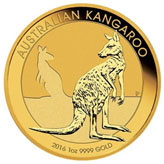
The Morgan Report has profiled some important new discoveries and approaches in resource sector mining plays, but nothing quite like this potential paradigm-shift saga. Back in September while Bob was writing his book, our readers were being informed about what was going on in The Pilbara. (New TMR subs can get a free copy of the breakout report here: https://www.themorganreport.com/novo-resources.) A month later, our top line readers had front row seats to an interview with Quinton Hennigh himself. So there.
Whether you're an arm-chair prospector, an honest to goodness rock-kicker or a person who just wants to read a TRUE story so compelling that you're shaking your head long after you've finished, you owe it to yourself to find a place for this book title on your shelf. Amaze your friends by asking them if they've read, "What Became of the Crow?" Or "Hey, I just finished reading WBOTC!"
Then relax and maybe have a "Barbie" with a "stubbie" or two (Aussie-speak respectively for a barbeque and a bottle of beer...Because maybe you couldn't put the book down until you'd finished reading it—or you're feeling like you spent too much time in the boiling sun of the Outback?
See if you don't agree with Bob Moriarty, and Jay Taylor, one of the first analysts to write about this epic geological detective thriller, now that you've been informed big time as to what really took place "Inside The Greatest Gold Discovery in History."
David H. Smith is senior analyst for The Morgan Report, and a ghostwriter. Smith has visited and written about properties in Argentina, Chile, Mexico, Bolivia, China, Canada and the U.S. He is an investment conference/workshop presenter at gatherings/workshops both in attendance and virtually in Canada and the U.S. He is co-author, along with David Morgan, of Second Chance: How to Make and Keep Big Money from the Coming Gold and Silver Shock Wave. Along with Mr. Morgan, he is an advisor to the LODE Cryptographic Silver Project. His work for subscribers can be found on The Morgan Report and for the general public at Silverguru.
[NLINSERT]Disclosure:
1) David H. Smith: I, or members of my immediate household or family, own shares of the following companies mentioned in this article: Novo Resources and New Found Gold Corp., both purchased in the open market. I personally am, or members of my immediate household or family are, paid by the following companies mentioned in this article: None. My company has a financial relationship with the following companies mentioned in this article: None. I determined which companies would be included in this article based on my research and understanding of the sector.
2) The following companies mentioned in this article are billboard sponsors of Streetwise Reports: None. Click here for important disclosures about sponsor fees. The information provided above is for informational purposes only and is not a recommendation to buy or sell any security.
3) Statements and opinions expressed are the opinions of the author and not of Streetwise Reports or its officers. The author is wholly responsible for the validity of the statements. The author was not paid by Streetwise Reports for this article. Streetwise Reports was not paid by the author to publish or syndicate this article. Streetwise Reports requires contributing authors to disclose any shareholdings in, or economic relationships with, companies that they write about. Streetwise Reports relies upon the authors to accurately provide this information and Streetwise Reports has no means of verifying its accuracy.
4) This article does not constitute investment advice. Each reader is encouraged to consult with his or her individual financial professional and any action a reader takes as a result of information presented here is his or her own responsibility. By opening this page, each reader accepts and agrees to Streetwise Reports' terms of use and full legal disclaimer. This article is not a solicitation for investment. Streetwise Reports does not render general or specific investment advice and the information on Streetwise Reports should not be considered a recommendation to buy or sell any security. Streetwise Reports does not endorse or recommend the business, products, services or securities of any company mentioned on Streetwise Reports.
5) From time to time, Streetwise Reports LLC and its directors, officers, employees or members of their families, as well as persons interviewed for articles and interviews on the site, may have a long or short position in securities mentioned. Directors, officers, employees or members of their immediate families are prohibited from making purchases and/or sales of those securities in the open market or otherwise from the time of the decision to publish an article until three business days after the publication of the article. The foregoing prohibition does not apply to articles that in substance only restate previously published company releases.




